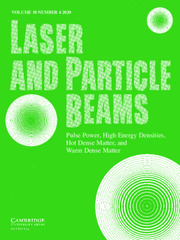Crossref Citations
This article has been cited by the following publications. This list is generated based on data provided by Crossref.
Abdelli-Messaci, S
Kerdja, T
Bendib, A
and
Malek, S
2002.
Emission study of C2and CN in laser-created carbon plasma under nitrogen environment.
Journal of Physics D: Applied Physics,
Vol. 35,
Issue. 21,
p.
2772.

